Visit The Historic Democracy Monument In Bangkok And Immerse Yourself In Thai History
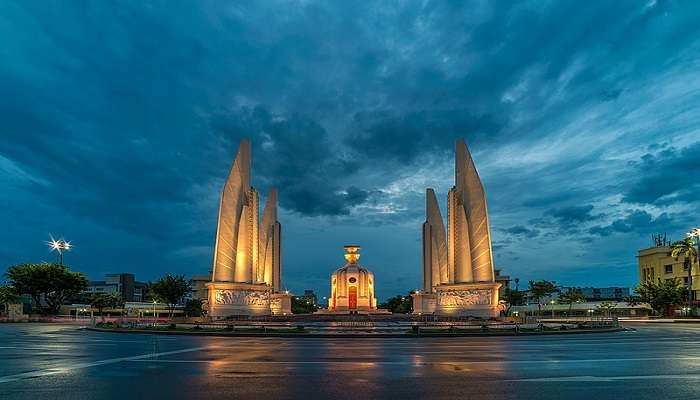
Inside the central area of a noisy Bangkok, lies the Democracy Monument, an iconic reminder of Thailand’s historic transition into a constitutional monarchy. This marvellous architectural masterpiece, with finely carved wings of its own and the height of freedom, tells the story of the nation towards progress and freedom. Visiting the renowned landmark for a traveller unfolds intriguing stories woven by history, culture, and people’s determination.
Democracy Monument History
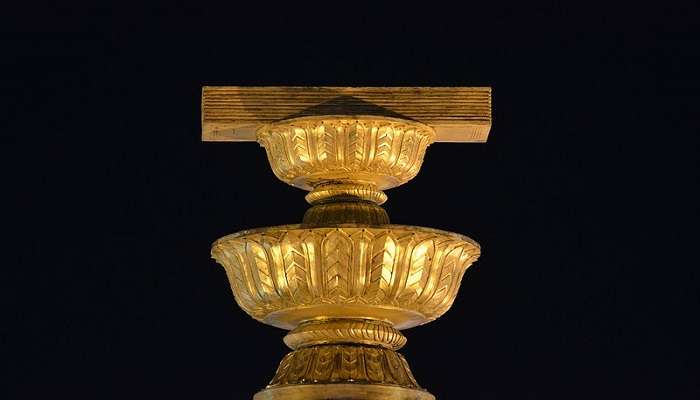
Democracy Monument, or “Anusawari Prachathipatai” in Thai, is one of Bangkok’s most famous and historically important landmarks. A massive monument was erected on June 24, 1939, to commemorate the 1932 Siamese Revolution, which transitioned Thailand from an absolute monarchy to a constitutional monarchy. Its presence shows that the country wants to set itself apart by upholding democratic principles and taking the next steps forward. Military officers and civilian protesters united to demand a constitutional monarchy, leading to political reform and a new governance system in Thailand. The Democracy Monument epitomises and celebrates the turning point for generations to come, which will be recorded for eternity by being inscribed into the fabric of Bangkok’s cityscape.
Must Read: Places To Visit In Bangkok
Architectural Significance
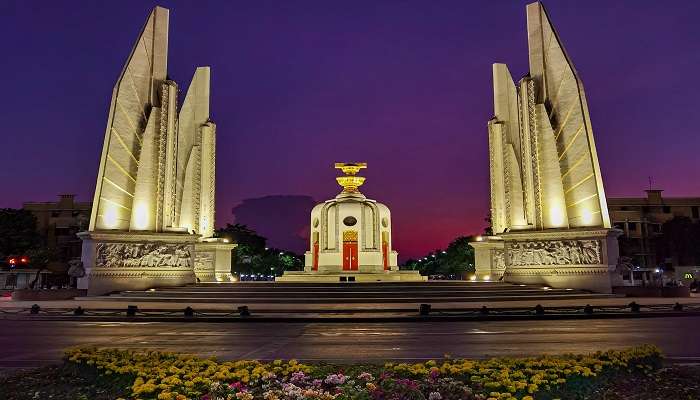
The monument towers 24 meters and has wings representing each of the four armed forces of the Thai nation—the Army, Navy, Air Force, and Police. At its core is a picture of two ancient offering bowls containing a palm leaf manuscript box, representing the constitution of 1932 that designated the crown in the COVID-19 crisis. The complex reliefs distributed around the base give an account of the Council’s session and elaborate an animated account of the events during the revolution.
The monument’s design combines symbolic elements to represent the nation’s history and achievements. These elements, such as the height of the wings, the number of small cannons placed around it, and many more, have various meanings, which reveal when the insurgency happened, at what time, and to what spirit that day modified Thailand’s history.
A Witness To Changing Times
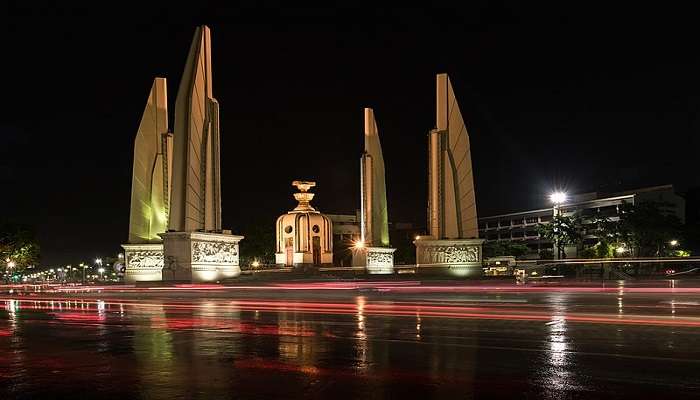
On the other hand, though its initiation was mainly related to the military coup in 1932, the symbolisation has exceeded the military and acquired its importance. During the past decades, this aesthetic feature of the country has been one of the “intersection points” for pro-democracy rallies as they moved forward in the waves of changes in Thailand’s political arena.
Democracy Monument continues to be a powerful symbol for preserving the nation’s nature and the incessant struggle for freedom in the face of ideological varying. Its continued existence is a testament that democracy is still a journey that underlies achievements and setbacks, with the resilient Thai people as the core aspirants.
Suggested Read: Things To Do In Bangkok
The Artistic Mastery
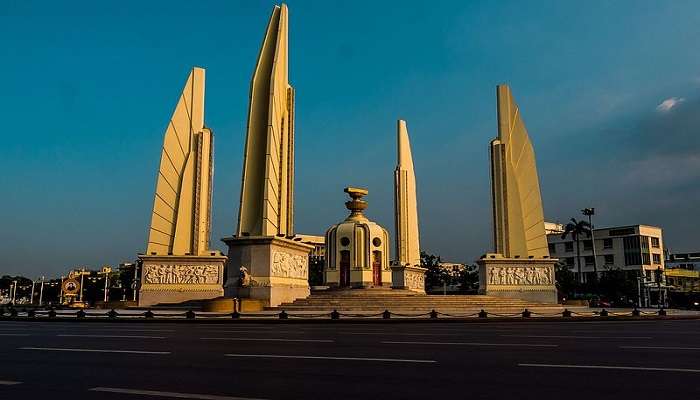
The Democracy Monument is a classical work of art. Built by Maeo Aphaiwong, the famous architect, its exceptional character displays fine architectural art. Nevertheless, the striking feature of the hall is the high-quality reliefs made by the Thai sculptor Corrado Feroci (who subsequently became the Silpa Bhirasi).
The masterfully done paintings embellish the monument, telling the stories of events that have occurred since the 1932 revolution until the climax of its highlights. Notably, each person and feeling is expressed in a realistic way, giving the impression that everyone is part of that breakthrough in Thai historical development. The fine reliefs depict scene-by-scene accounts of the revolutionary council’s meetings and the whole revolution itself, which is so outstanding that it makes phenomenal democracy monument photos.
Places To Visit Near Democracy Monument
The Democracy Monument is situated in the heart of Bangkok, making it an ideal starting point for exploring the city’s rich cultural heritage.
1. The Grand Palace
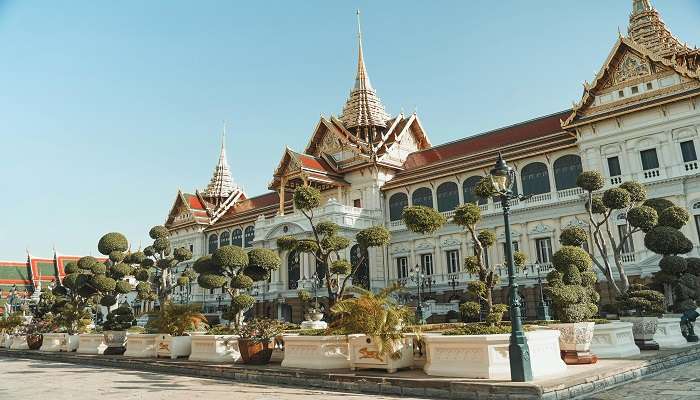
Located in Phra Nakhon, Bangkok Thailand, the Grand Palace is a large compound containing some buildings surrounded by walls situated in Bangkok, Thailand. It has been the official and ceremonial palace of the kingdom since it was constructed in 1782. The palace has been the official residence of the Kings of Siam (and later Thailand) since 1782. King, his court, and his royal government were in the palace until 1925. It remains a functional structure and hosts official events and ceremonies.
Suggested Read: Chiang-Mai Nightlife
2. Wat Pho

Wat Pho is one of the oldest and most popular temples in Bangkok, situated on Rattanakosin Island, south of the palace. It has a giant reclining Buddha statue that is 46 metres long and plated with gold leaf. It also has a Thai medicine school and is regarded as the origin of traditional Thai massage. Wat Pho was constructed in the 16th century and was earlier known as Wat Photaram or Podharam. King Rama I later renamed it Wat Pho and expanded and reconstructed the temple complex at the site of the existing temple.
3. Khao San Road
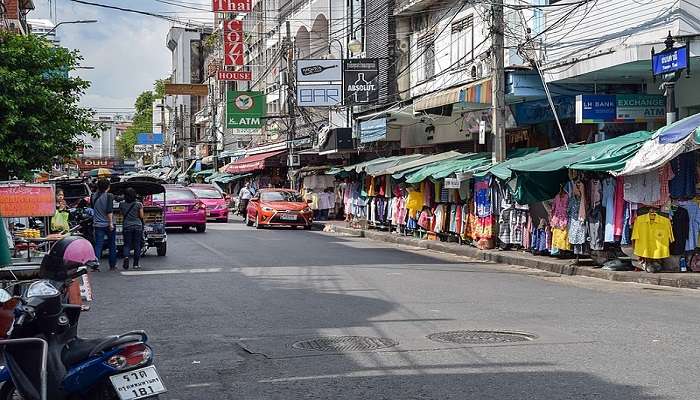
It is a 410-metre-long street in central Bangkok; however, it has become one of the most significant landmarks for backpackers and tourists. Located in the concrete jungle of the Bang Lamphu district which is only one kilometre away from The Palace and Temple of the Emerald Buddha, this street offers guests various opportunities. Khao San Road, over the years, has evolved into what many refer to as the ‘backpacker ghetto’. With its rich and exciting tourist attractions features such as nightlife, cheap accommodations, and delicious Thai street foods, it attracts thousands of tourists annually.
Suggested Read: Trekking near Bangkok
4. Pak Khlong Talat
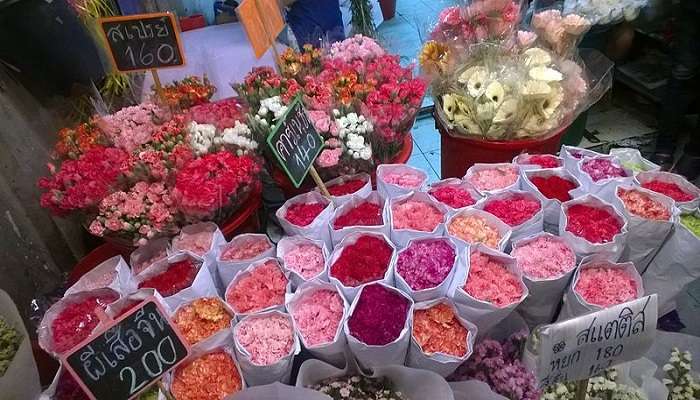
Pak Khlong Talat in Wang Burapha Phirom Subdistrict, Phra Nakhon District, Bangkok Thailand is a market that sells flowers, fruits, and vegetables. This market is known to be the first flower market in Bangkok and has been mentioned as a “sentimental price place” by the locals of Bangkok. Pak Khlong Talat was a floating market in the early 18th century during the reign of King Rama I and then became a big fish market in the 19th century. In the 1950s, when local authorities got annoyed with the fishy smell of the market in central Bangkok, flower and produce vendors were taken in, and the site gradually evolved into the Bangkok Flower Market we know today.
How To Reach
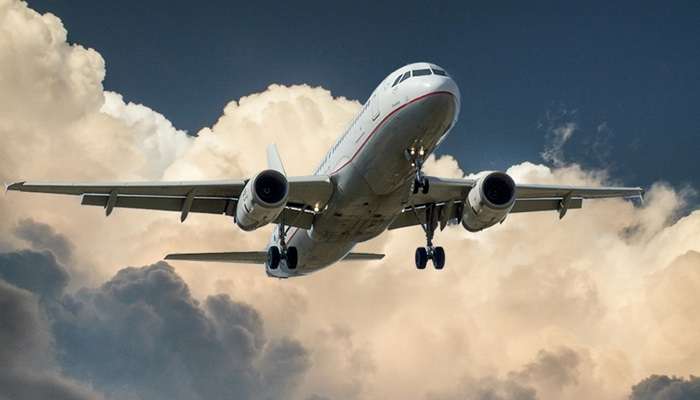
Reaching the Democracy Monument is convenient for travellers. If you have been there for some time or think you would not get lost in the metro, then a 15-minute walk will take you to the Sam Yot MRT station on the Silom line, which is aligned with the green line. In striking contrast, visitors may also avail themselves of taxis or tuk-tuks that speedily lead them to the city’s buzzing avenues.
By Air
The nearest airport to Democracy Monument is the Suvarnabhumi Airport.
By Road
Taxis are readily available for people to take you to your destination.
By Train
The nearest station to Democracy Monument is Bangkok Station. It takes approximately 18 minutes to reach there.
Further Read: Islands Near Bangkok
The Democracy Monument in Bangkok memorialises Thailand’s transition to a constitutional monarchy – an essential part of democracy monument history. An architectural marvel with a fascinating history, this enlightening icon embodies the nation’s past. It leads Thailand towards progress and freedom. Memories of this inspiring moment abide while reversing the country’s diverse culture during your trip to Thailand. The visit celebrates Thailand’s tough path to reach its present and future goals.
For our editorial codes of conduct and copyright disclaimer, please click here.
Cover Image Source: wikimedia
Frequently Asked Questions About Democracy Monument
Are there any guided tours available specifically for the Democracy Monument?
Yes, several tour operators offer guided tours focused on the Democracy Monument and its historical significance.
Is the Democracy Monument accessible for visitors with disabilities or mobility issues?
Yes, the monument and its surrounding areas are designed to be wheelchair-accessible and disability-friendly.
Are there any public restrooms or facilities available near the Democracy Monument?
Yes, there are public restrooms and other basic facilities located within a short walking distance from the monument.
Is there a specific dress code or etiquette to be observed when visiting the Democracy Monument?
While there is no strict dress code, visitors are advised to dress respectfully and avoid revealing clothing.
Are there any nearby cafes or restaurants near Democracy Monument?
Yes, there are several local eateries and street food vendors in the vicinity, offering authentic Thai cuisine.
People Also Read:
Statue Of Liberty Burj Khalifa Louvre Museum
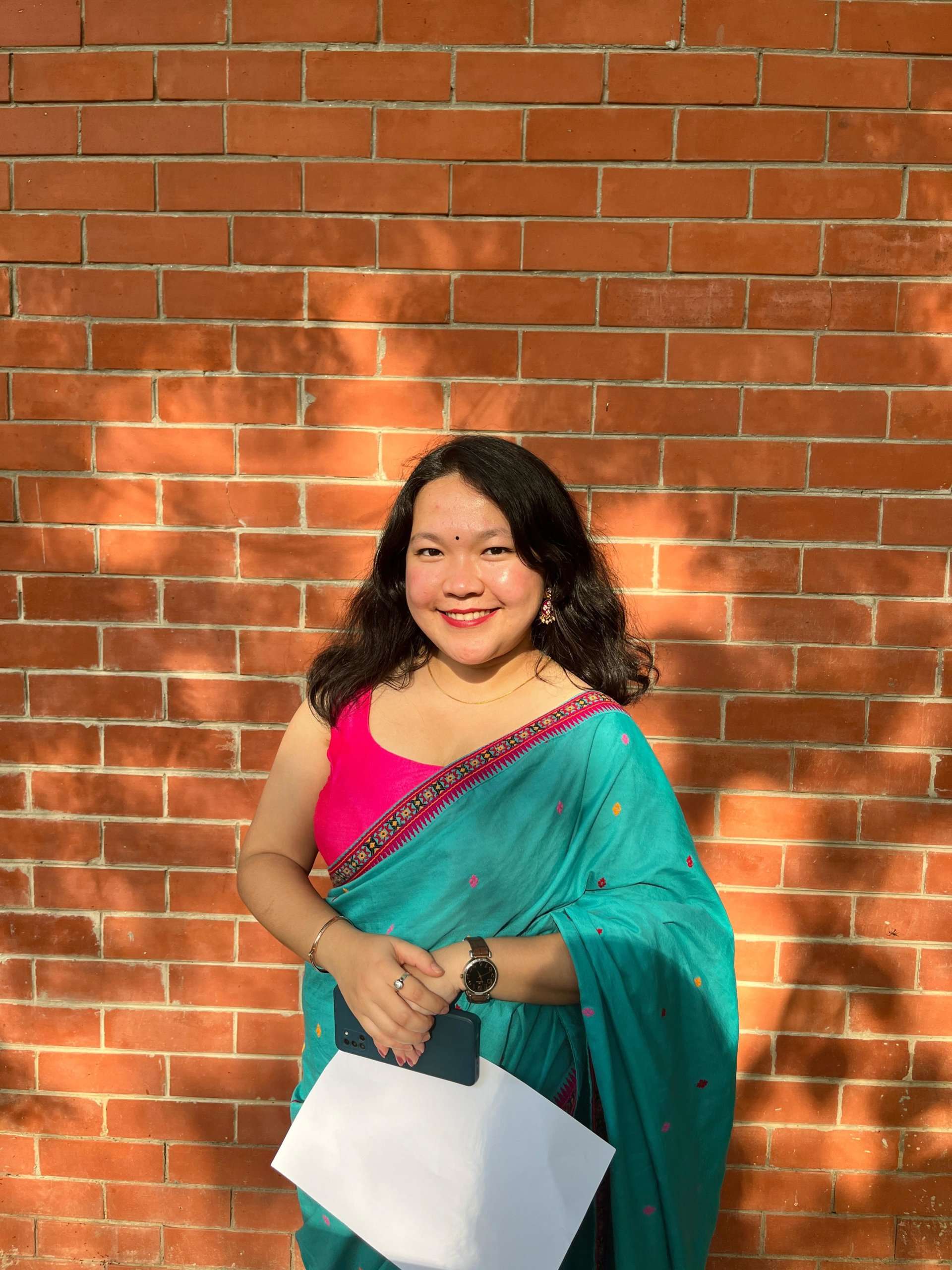
We all have to begin somewhere. This is where I start and I hope that my writings encourage you to begin. To new beginnings and conquering new places!











